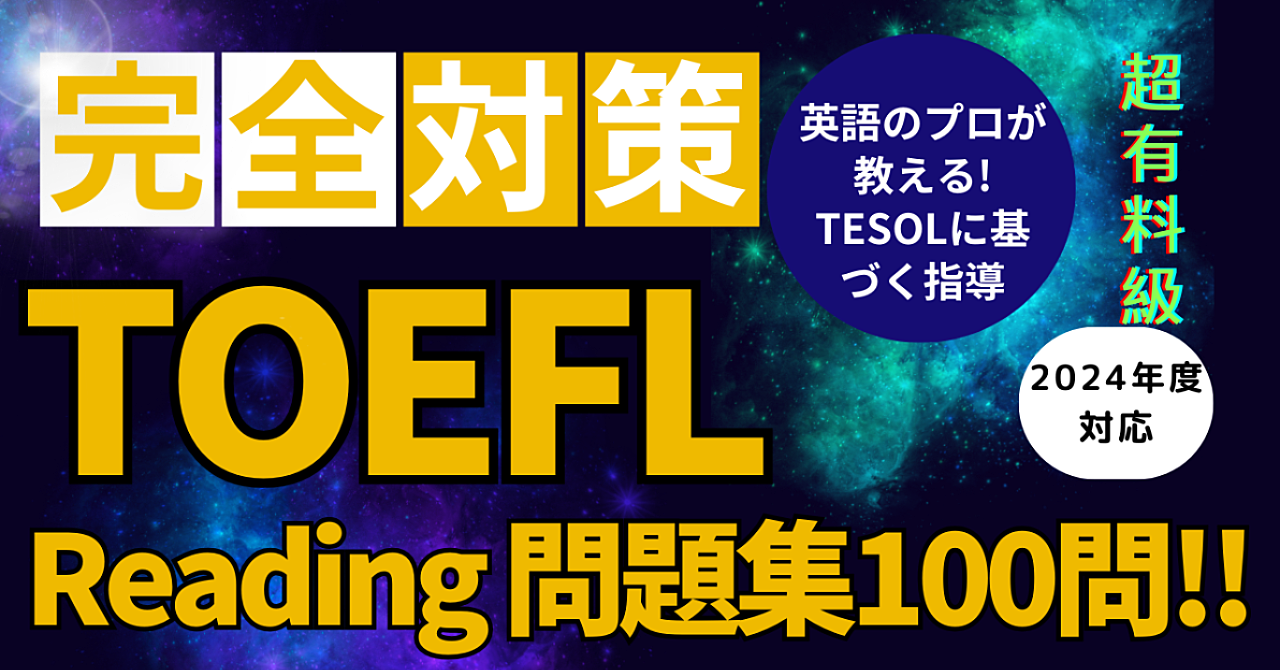

TOEFL Reading 問題集 vol.1(100問)
0 件のレビューがあります
平均スコア 0.0
はじめまして!TOEFL指導・アメリカ留学エキスパートのジュンです!これまで述べ400名以上の留学生のサポートさせていただきました。大学探しから、渡米準備、TOEFL対策や現地でのケアなど様々です。その中でも、英語学習については「TOEFL勉強の仕方やノートを見せてい
5,668 total views, 26 views today
この記事のレビュー
0 件のレビューがあります
平均スコア 0.0







